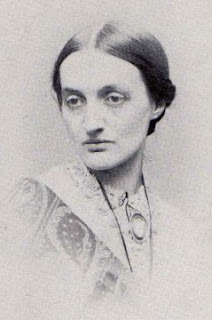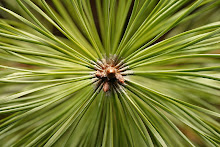William Holman Hunt (1827-1910) was an English painter and one of the founders of the Pre-Raphaelite Brotherhood in 1848. He gained admission to the Royal Academy art school on his third attempt and there he met artists Dante Gabriel Rossetti and John Everett Millais with whom he formed the brotherhood. They sought to revitalize English art focusing on detailed observations of nature along with a religious devotion to the truth as influenced by the spiritual qualities of earlier medieval art. Of the three, Hunt remained the most faithful to the Pre-Raphaelite ideals and techniques; as he put it he held an uncompromising dedication to the principles of truth in preference to beauty. His paintings were mostly religious or moralistic and executed in exacting detail. His use of light was considered by some to be inordinately bright almost to the point of being harsh. His work was created painstakingly, laboriously, with an intense devotion to symbolism and metaphor, gaining him a reputation and worthiness of much respect. However, his work was not often considered typically pleasant or beautiful to look at by critics.

Photograph by Lewis Carroll
In 1851 Hunt began one of his best known works,
The Light of the World which Hunt did to symbolize his religious conversion or salvation coming to a sinful world. Hunt came to describe his style as "symbolic realism"and with it he hoped to bring religious painting into the post-industrial world and thus give present day churchgoers their own modern iconography.

Many art critics of the period took exception to Hunt's devotion to extreme detail or his religious naturalism and considered it distasteful. Some even found it shocking that Hunt would attempt to show scriptual history with such complete accuracy and material truth. Others were concerned that the artist would risk the emotional expression that was essential for success in favor of ornamentation and pure surface detail. Critics felt such a method worked for lesser works but not for any ambitious or high art. To the contrary Hunt believed that the best of contemporary high religious art required this naturalistic technique to challenge the great artists of the past. Conservative art critics of the British Academic tradition found any naturalistic detail to be distracting and showed a lack of imagination. But to Hunt and the Pre-Raphaelite principles truth and accuracy were most important. There were however, some critics of his time who considered Hunt's work extraordinary and of crucial importance to Victorian art. He considered himself to be an art pioneer or even an art prophet. In time many art critics came to accept Hunt's work because it found favor with his Victorian audience.

The above painting, "The Finding of the Saviour in the Temple", exemplifies Hunt's belief that it was the artisit's responsibility to accurately portray many physical details of a scene because such details generated essential atmosphere and meaning. This painting came to represent the epitome of a new school of religious naturalism to English art critics of the time.
Isabella and the Pot of Basil
Hunt's position toward naturalistic detail was the catalyst in his many trips to the Middle East which he found to be a land of wonder, fantasy and exotic life. He believed artists should go and see for themselves and depict what they saw so they could bring back to England the records of man and place with which most were unfamilier. He insisted his travels and immersion into Orientalism permitted him to confront nature more directly and more truthfully in a simpler, less sophisticated way, place and time as yet uncontaminated by convention. Hunt made four extended journeys to the Holy Land over his career following his desire to find and paint locations where Biblical events occured in his naturalistic representation of Bible history.
Hunt's Uffizi Self-Portrait
Hunt married twice. First to Fanny Waugh who later modeled for the above Isabella. Fanny died on December 20, 1866 in childbirth in Florence, Italy where the couple was forced to stop on their journey to the Holy Land when an outbreak of cholera halted their expedtition. Hunt painted his portrait of Fanny as a companion piece to his self-portrait so his infant son, Cyril, would have both mother and father likenesses in the future. The devastated widower sculpted her tomb and had it brought back to England where she was buried beside the tomb of Elizabeth Barrett Browning.
Fanny
Hunt's second wife was Edith, Fanny's sister, whom he was forced to travel abroad to marry since it was illegal at that time in England to marry one's deceased wife's sister. This led to an unfortunate breach with other family members including his Pre-Raphaelite colleague Thomas Woolner who had married Fanny and Edith's other sister Alice.
Edith
Miss Gladys M. Holman Hunt (daughter)
William Holman Hunt died on September 7, 1910 in Sonning-on-Thames, England.


















































